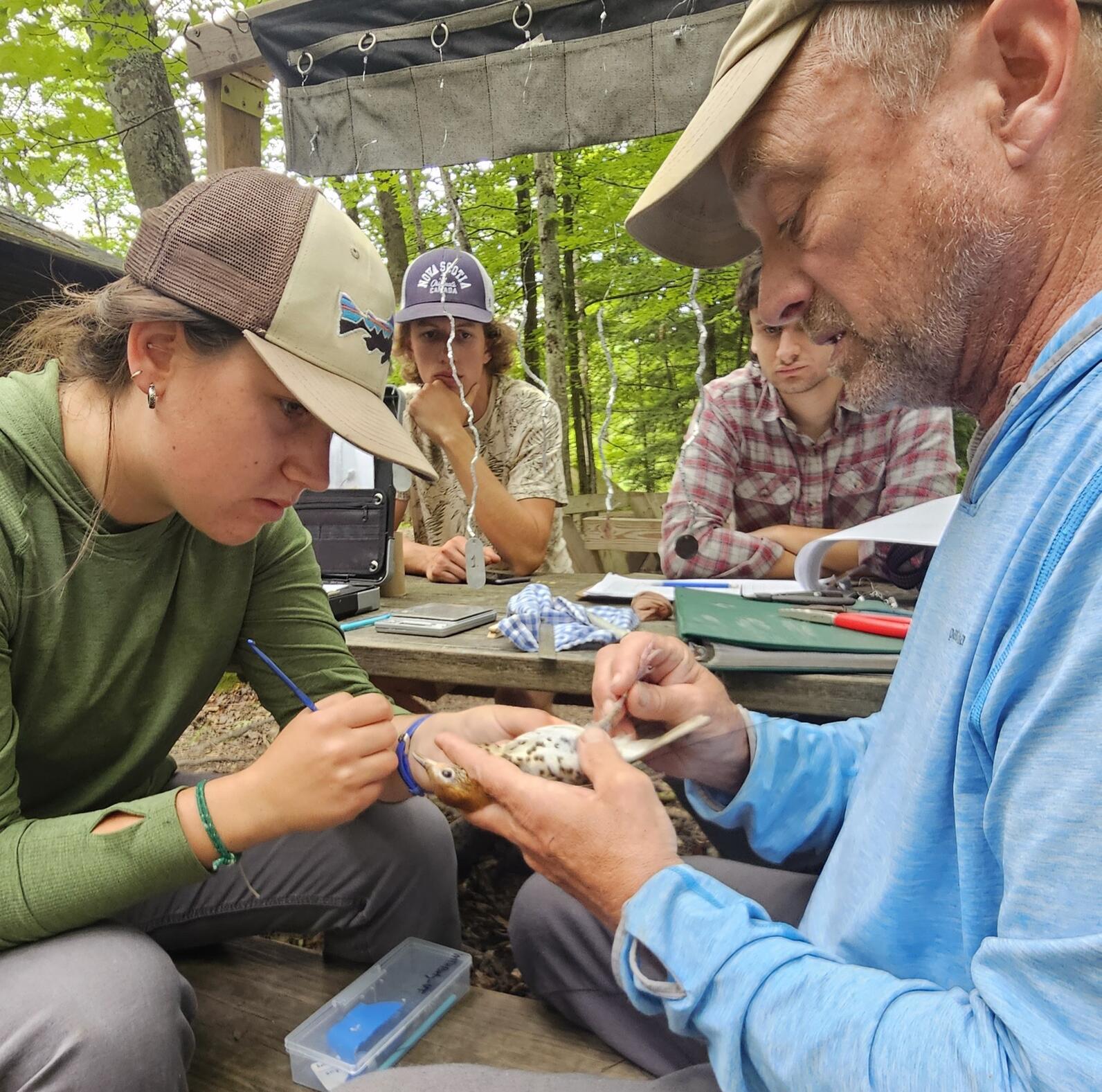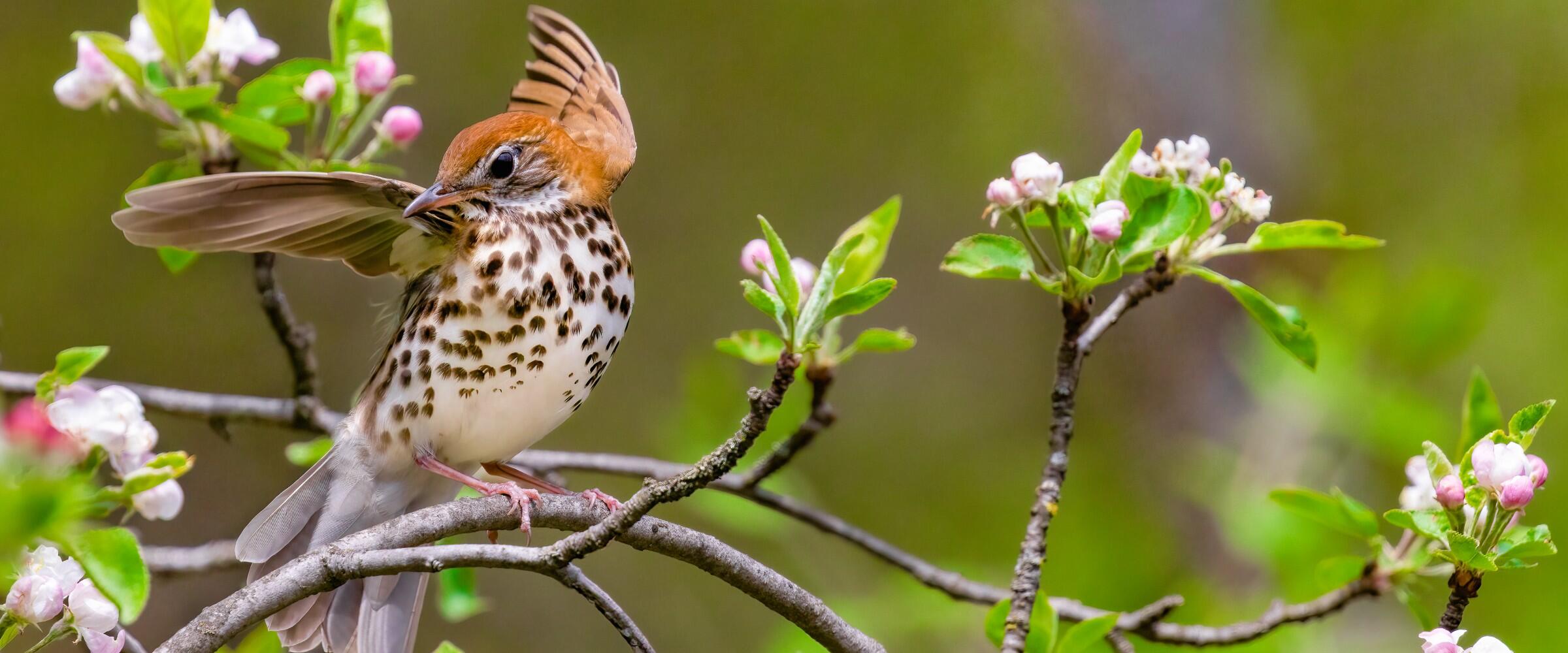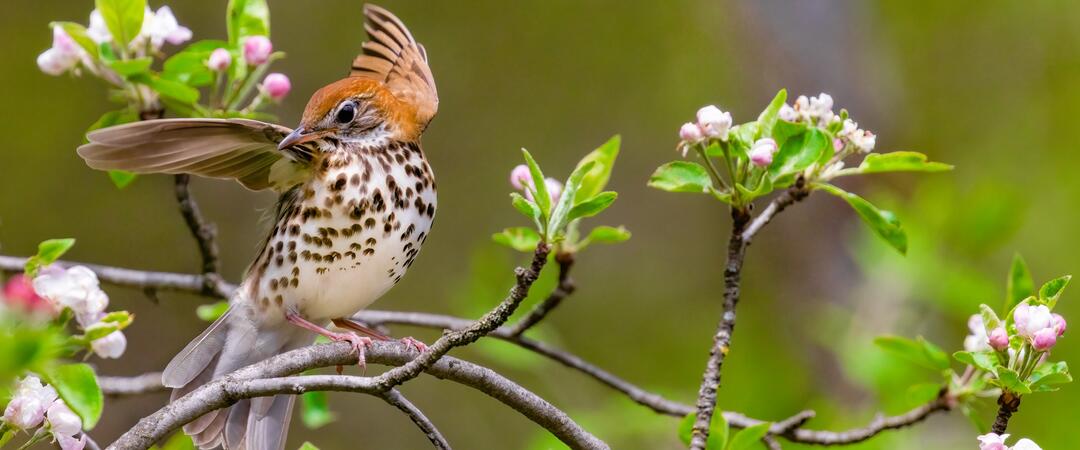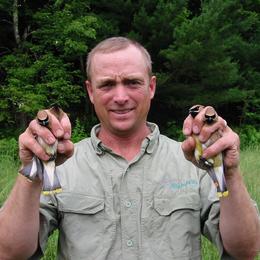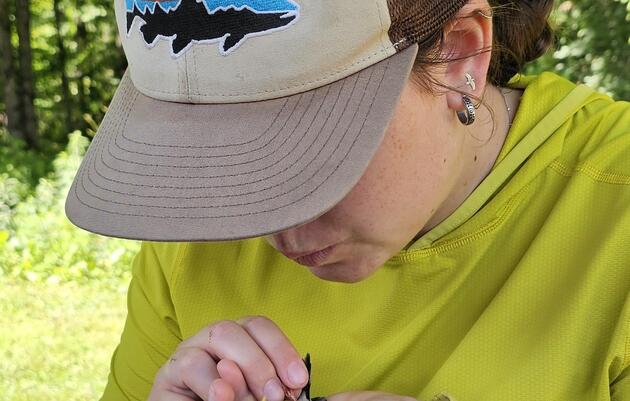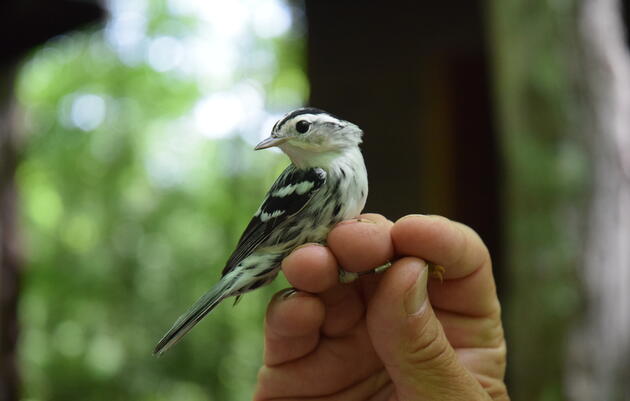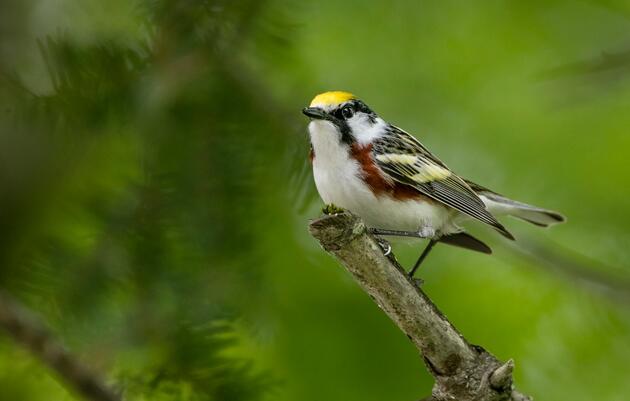This summer, as part of a regional effort to learn more about Wood Thrush migration, the US Fish & Wildlife Service deployed more than 550 nanotags on Wood Thrush across their breeding range. Audubon Vermont was one of many organizations across the East Coast that participated in the project.
Nanotags are small, lightweight transmitters that are carefully fitted on the backs of the birds by trained professionals. Two wire loops slip over each of the bird's legs so that they are essentially wearing the transmitter like a backpack! Once secured, the nanotag does not impede the bird's movement or flight. After release, the signal from the bird’s transmitter can be picked up by a network of telemetry towers in the Motus Wildlife Tracking System (Motus) across North, Central and South America. This allows scientists to follow the birds as they move south and north during migration.
This data is critically important as Wood Thrush populations have drastically declined in recent decades. The North American Breeding Bird Survey estimates that Wood Thrush have declined by almost 50% between 1966 and 2019. Habitat fragmentation in both their breeding and wintering grounds is believed to be a major factor driving these declines. Fragmentation occurs when one large, contiguous habitat is broken up into many smaller, isolated patches, often as a result of human activities like construction. Wood Thrush depend on mature, moist deciduous forests with a dense understory both for foraging and nesting. Fragmented habitats often lack these qualities, which makes finding quality food sources more difficult and makes nests more vulnerable to predators and nest parasites, like the Brown-headed Cowbird. Researchers hope to better understand the migration patterns and habitat requirements of Wood Thrush to inform vital conservation intervention.
Audubon Vermont’s Conservation Program Manager Mark LaBarr and Priority Bird Species Conservation Intern Devan Kajah spent the latter half of June tracking and catching Wood Thrush in the Champlain Valley. They patiently staked out prime Wood Thrush habitat in decidious forests with mist nests and decoys. Their efforts paid off and they successfully banded and tagged six Wood Thrush, carefully recording data about the birds’ ages, weights, and overall conditions. These birds have now embarked on their fall migration journeys to their wintering grounds in Central America. We hope they all have a safe flight!
Mark will be monitoring the progress of each bird through Motus. So far we've received updates on four of our tagged thrushes!
Stay tuned for more updates on Vermont’s Wood Thrush movements throughout fall migration! You can use the links below to view the Motus maps for each tagged bird:
- Wood Thrush #56656 Nickname: Debby; Tagged: 6/13 Shelburne, VT; Last Detected: 10/11 on the coast of GA
- Wood Thrush #56657 Nickname: Barbara; Tagged: 6/25 at Dead Creek Wildlife Management Area, VT; Last Detected: 10/8 at Blue Marsh Lake National Recreation Area, PA
- Wood Thrush #56658 Nickname: Dr. McHugh; Tagged: 6/28 at Helen W. Buckner Preserve, VT; Last Detected: 10/15 near Havana, Cuba
- Wood Thrush #56660 Nickname: Demi; Tagged: 6/18; Last Detected: 10/24 at the Belize Foundation for Research & Environmental Education, Chan Quebrada, Toledo, Belize
